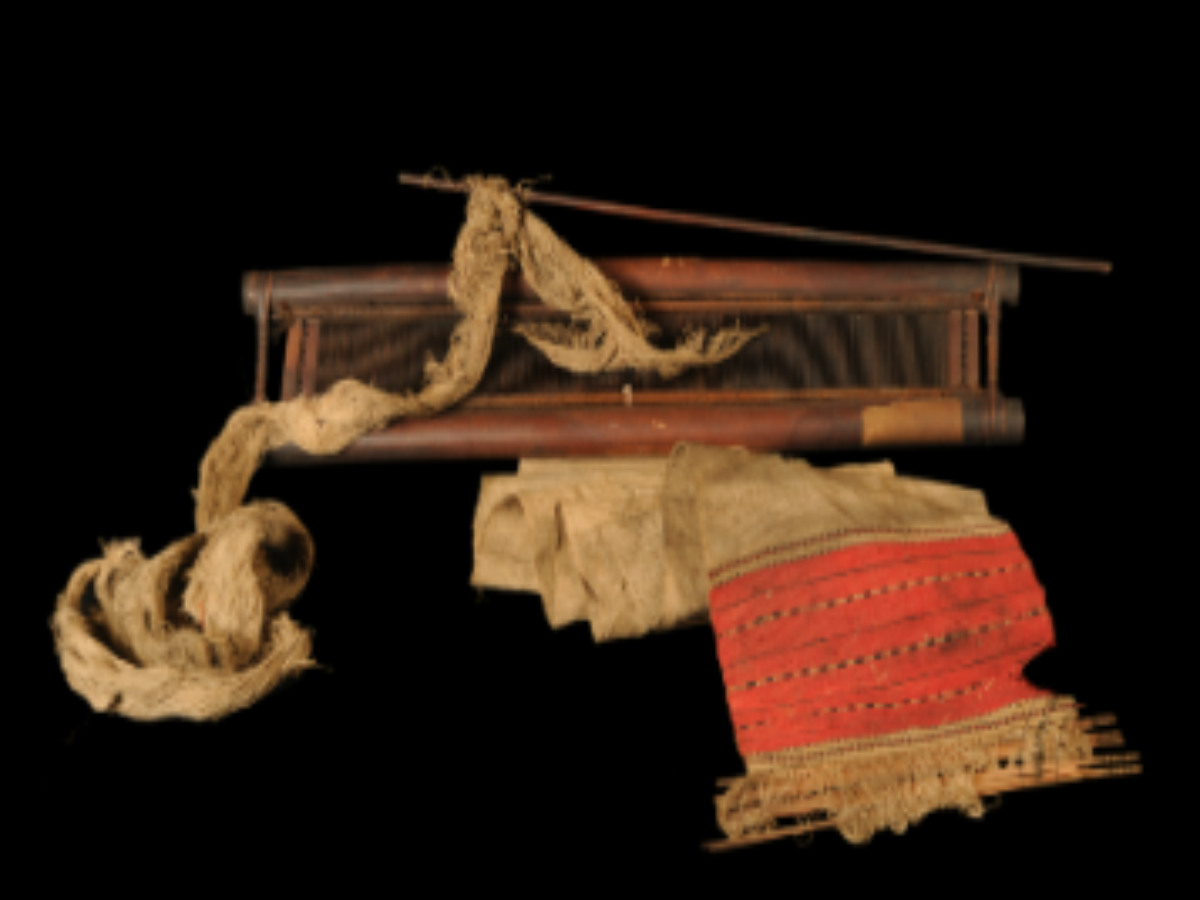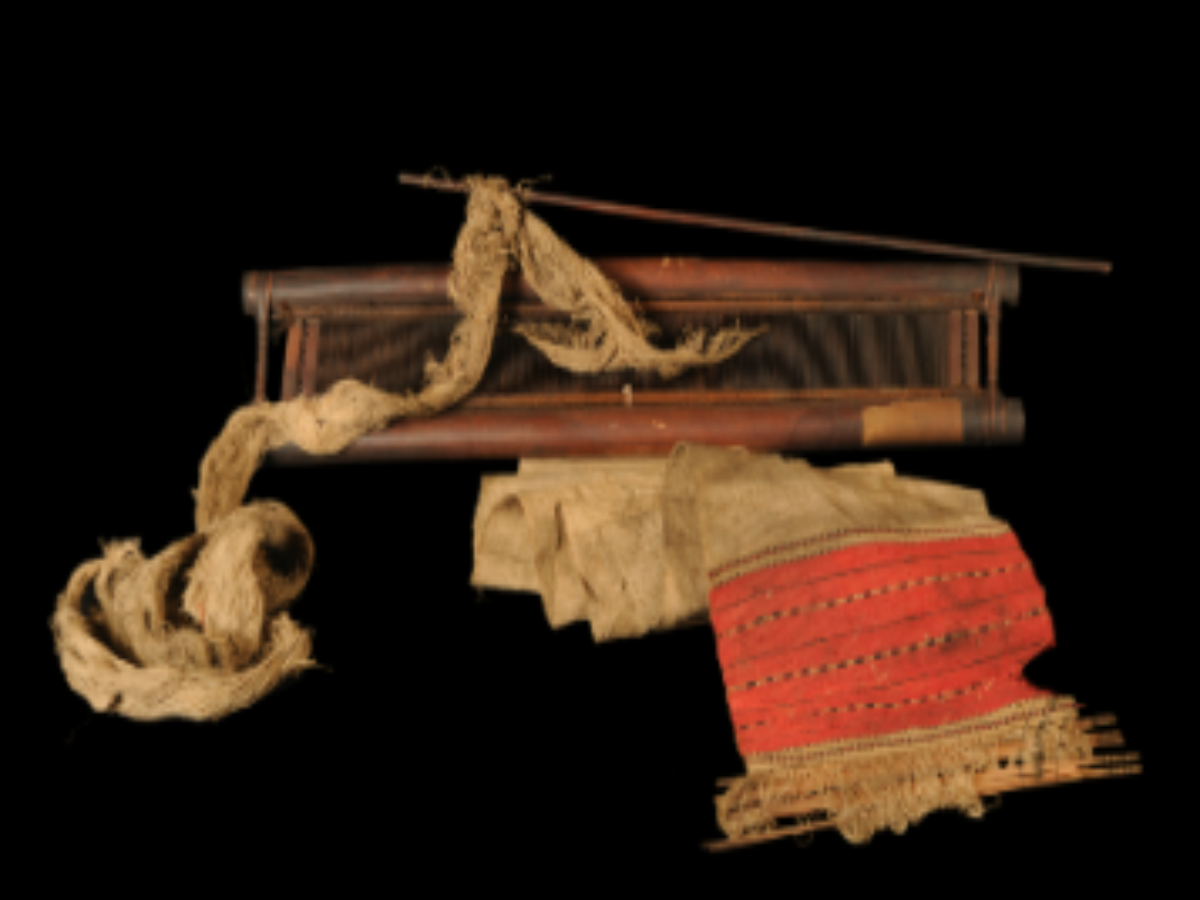State
Tribe Name
Art Type
short description
The Mikir tribe is basically an indigenous group of Assam found mainly within the verdant hills of Karbi Anglong. For these tribal people, weaving is one of the most vibrant cultural symbols recognized by their genetic self-sustainability. The distinctive piece of household equipment of such Mikir people is the customary loom with half-woven cloth as a representation of Mikir artisans' intricate craftsmanship and utilitarian design. In making the loom structure, two parallel bamboo sticks are used, in-between which finely split bamboo pieces are placed perpendicularly. This construction forms the basic frame to hold the warp and weave at such a place. The two ends tied securely by cane strips portray the skilled-hand use of these natives in employing eco-friendly local materials. However, what stands out as unique is the presence of six splits of bamboo at one end of the cloth, which must aid in maintaining tension or alignment during weaving.
Thumbnail

Filter Postion
Right
Filter Background
Off
Theme
Filter Header Image

content
Image

description
The Mikir tribe is basically an indigenous group of Assam found mainly within the verdant hills of Karbi Anglong. For these tribal people, weaving is one of the most vibrant cultural symbols recognized by their genetic self-sustainability. The distinctive piece of household equipment of such Mikir people is the customary loom with half-woven cloth as a representation of Mikir artisans' intricate craftsmanship and utilitarian design. In making the loom structure, two parallel bamboo sticks are used, in-between which finely split bamboo pieces are placed perpendicularly. This construction forms the basic frame to hold the warp and weave at such a place. The two ends tied securely by cane strips portray the skilled-hand use of these natives in employing eco-friendly local materials. However, what stands out as unique is the presence of six splits of bamboo at one end of the cloth, which must aid in maintaining tension or alignment during weaving.
The use of such looms in Mikir households further depicts the importance of weaving in the house as a daily household activity carried out, mostly by women. The woven fabrics serve mostly for garments purposes or for domestic uses, sometimes incorporating tribal motifs or patterns, the emblems of the Mikir culture. This is more than a loom used to weave fabric; it is an evidence of an indigenous innovation, sustainability, hundreds of year's worth of legacies in traditions that have been passed down through generations.
The use of such looms in Mikir households further depicts the importance of weaving in the house as a daily household activity carried out, mostly by women. The woven fabrics serve mostly for garments purposes or for domestic uses, sometimes incorporating tribal motifs or patterns, the emblems of the Mikir culture. This is more than a loom used to weave fabric; it is an evidence of an indigenous innovation, sustainability, hundreds of year's worth of legacies in traditions that have been passed down through generations.
Image Mode
landscape
promoted
On
Verified
Off
